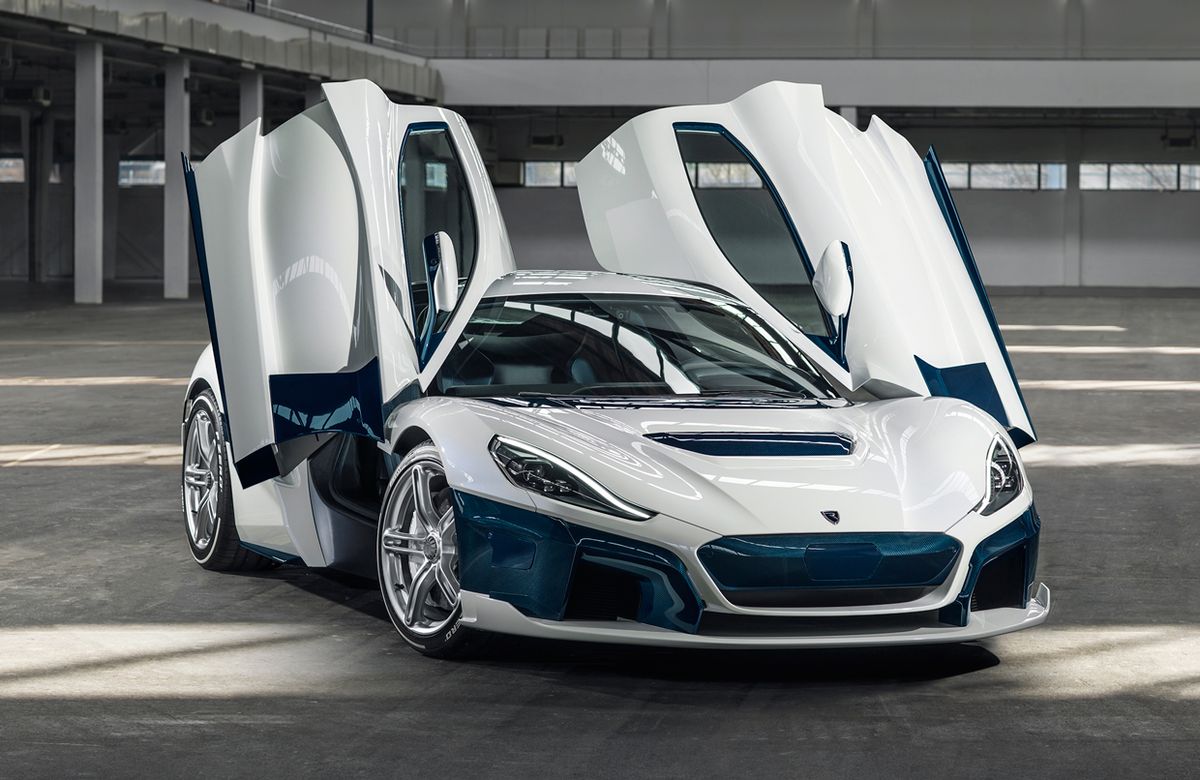2021’s Top Ten Tech Cars: Rimac C Two
This Croatian car outruns any other EV–for €2 million

Barely a decade ago, Mate Rimac was toiling in an unheated garage in Croatia, converting an old BMW to run on electricity for drag-racing competitions.
Today, the 33-year-old entrepreneur has 900 employees, a headquarters near Zagreb, development deals with Porsche and Hyundai, and a factory about to produce the Rimac C Two, a €2 million, 1,427-kilowatt, 415-kilometer-per-hour electric phantasm. Its projected 1.85-second rip from 0 to 60 miles per hour (97 kilometers per hour) would make it the first production car to break the 2.0-second barrier.
Delayed for a year by the COVID pandemic, Rimac plans to bring the first 150 C Twos to market this year. The model is the follow-up to his notorious Concept One, a hypercar with a mere 913 kW (yes, that's 1,224 horsepower). But to Rimac, the tech is just a means to an end. The point is to win over EV skeptics and bring carbon-neutral mobility.
“Before Tesla, people were building ugly, boxy electric cars, telling a story of saving fuel," Rimac says in an interview. “That's relevant, but it only brings in a small percentage of people."
Base price:
US $2.4 Million
His company's multifarious projects include Greyp, the electric bicycle company; an EV he's developing for Hyundai's new N Line; batteries for Aston Martin and Jaguar; and technical projects with Porsche, which increased its Rimac stake to 15.5 percent in 2020.
“When Porsche invested, after three years of due diligence, that was like, another level for us," Rimac says. “Porsche is all-in on electric cars."
What have these guys got that Porsche hasn't got? Small size and vertical integration. They let the company focus on high-performance battery, power train, and vehicle design more quickly than can, say, the sprawling Volkswagen Group (Porsche's parent), whose annual revenues are more than four times the annual gross domestic product of Croatia.
Rimac's C Two integrates a 120-kilowatt-hour lithium-nickel-manganese-cobalt-oxide battery into an ultralight carbon-fiber frame, to deliver a nominal range of 550 kilometers (342 miles), as measured by Europe's regulatory protocol. Electric motors at each wheel allow true torque vectoring: Wheels can be individually powered or braked, delivering otherworldly handling. Rimac says the system allows near-instant calibrations of dynamic torque.
That wingman philosophy extends to the Rimac's autonomous Driver Coach, a kind of hyperdriving onboard HAL 9000 based on a GPS database from racetracks all over the world. The scissor-doored Rimac incorporates six driver screens, a lidar unit, 13 onboard cameras, 12 ultrasonic sensors, and an exceptionally precise localization system using multiple stereo cameras and inertial-measurement-unit sensors.
“We're trying to use autonomous tech to add value to enthusiasts," he says. “This system will give you autonomous laps to show how a professional driver would do it. Then you take over, and the system gives you onboard coaching, showing where to brake, where to turn in, what you did wrong, and what you can do better."
Rimac slyly notes that Nikola Tesla was born in Croatia and says that, as a young petrolhead, he was fascinated by the inventor and the possibilities of his “electric machines." Perhaps future entrepreneurs will remember Rimac as fondly as he remembers his hero.


